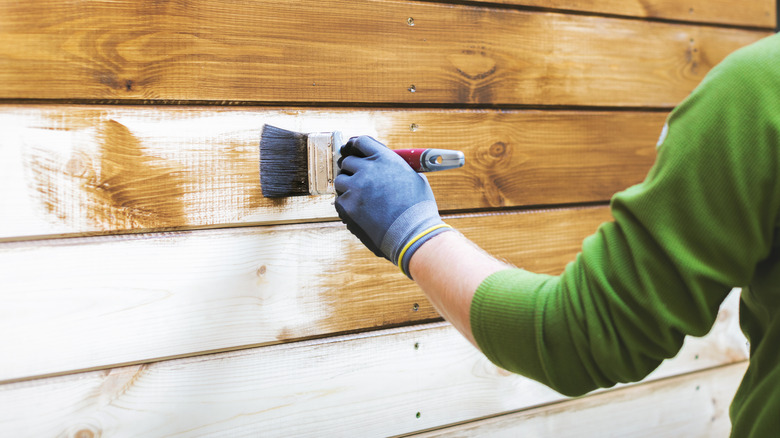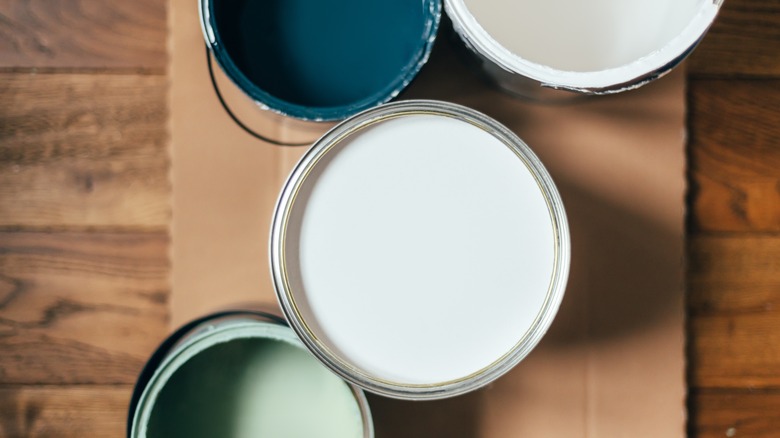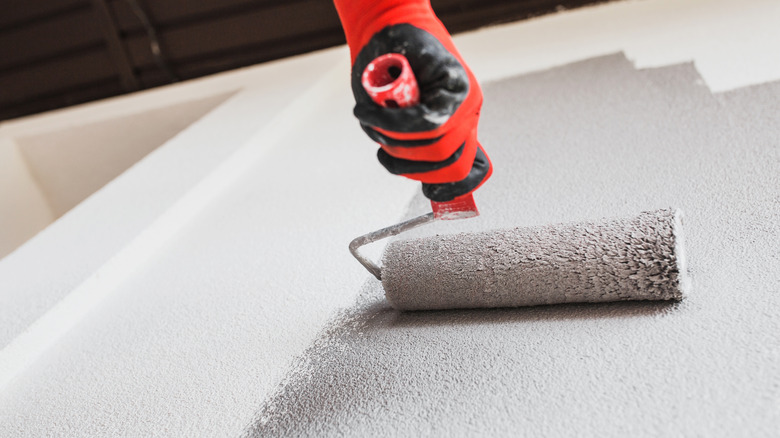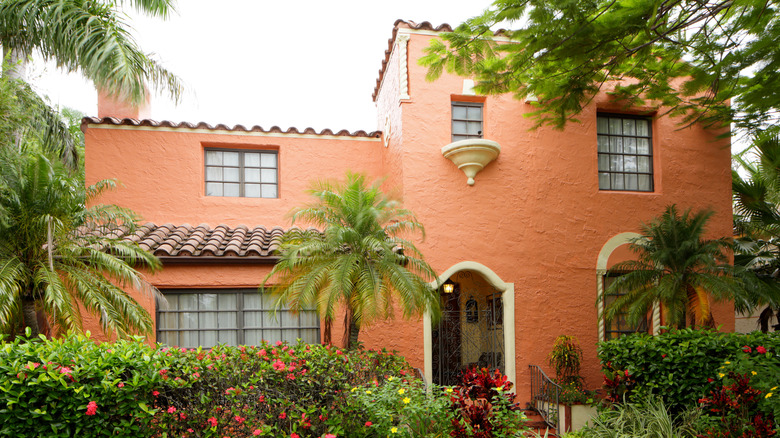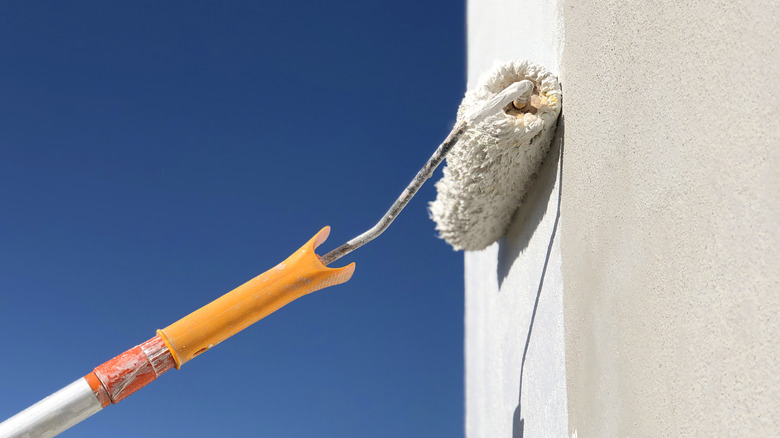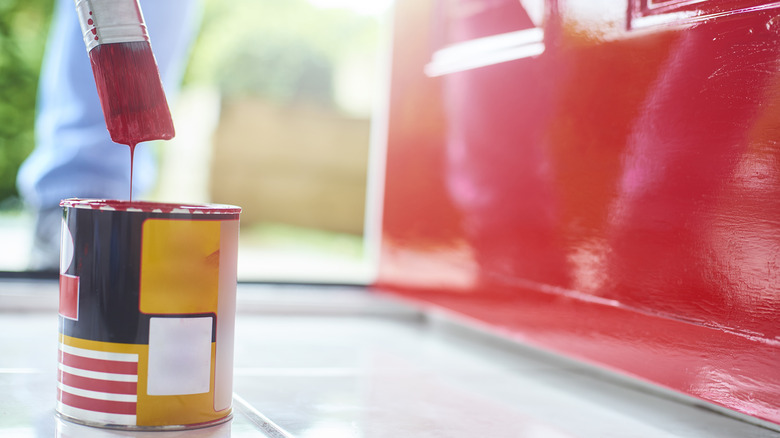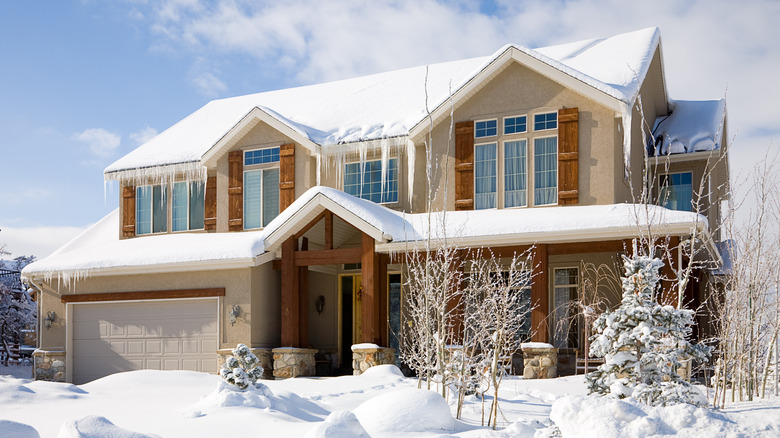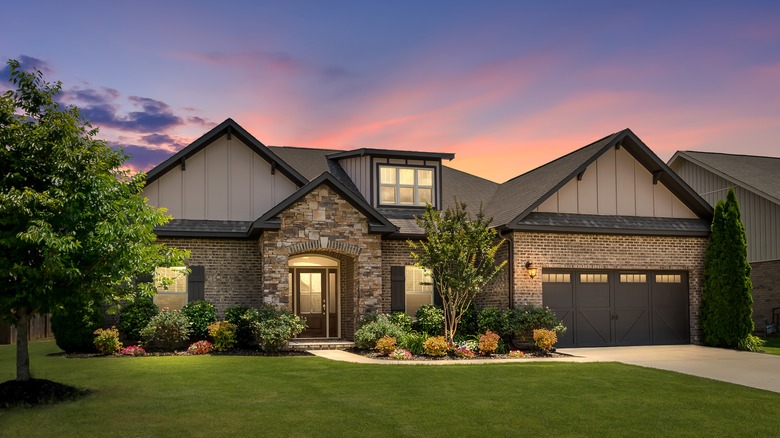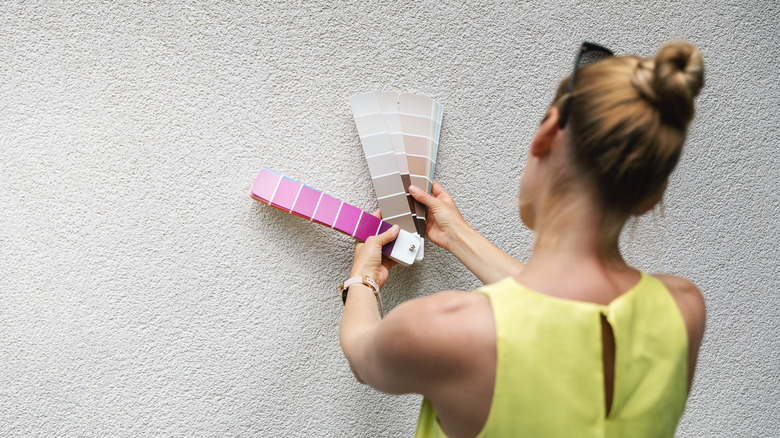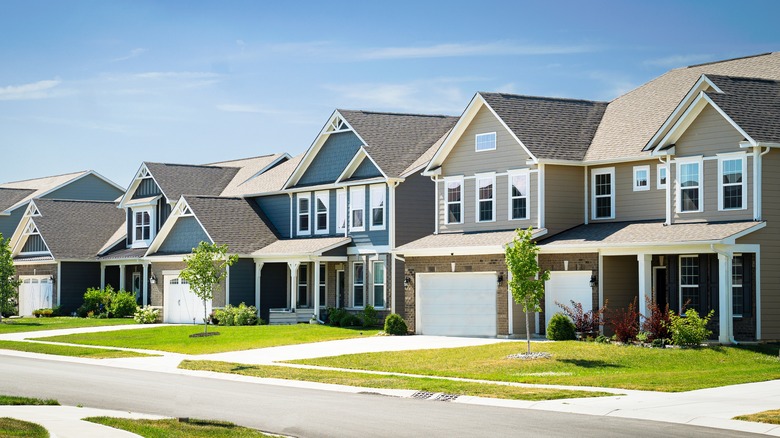10 Common Mistakes Everyone Makes When Choosing Exterior Paint
Setting out to paint your house's exterior is no small task, especially if you're planning to do it as a DIY project. There's pressure to choose the perfect color while ensuring that your paint job withstands exposure to the elements. So, there are several factors to consider if you plan to overhaul the outside of your home.
The facade of a house not only gives a first impression of who lives inside it but also implicates the functionality and durability of the property itself. Depending on the material that your home is made of, you may consider whether to paint or entirely replace it. For most, painting is the more efficient and cost-effective option. So, are you hoping to spruce up a newly purchased fixer-upper, or give your long-time home a fresh dose of design? Either, way here are some common mistakes to avoid when choosing the paint for your home exterior improvement project.
Not considering the difference between acrylic-based and oil-based paints
When it comes to exterior painting, there are two main categories of paint formulation to choose from: acrylic-based (which includes acrylic-latex-based paints) or oil-based paint. The paint type you choose for your home will depend on your priorities as a homeowner. Acrylic paint is the lower cost of the two types and tends to be more forgiving when it comes to exterior painting. That being said, it can require more frequent refreshing over time.
Oil paint can be a better choice if you're looking to fend off unsightly scratches and damage. And, while oil-based paint creates a durable finish, it can also be harder to clean up or correct mistakes. Some people may want to leave the oil-based painting to professionals since it requires a bit more legwork to ensure great application. On the other hand, a high-quality acrylic paint would be a solid choice for someone prepared to go the more economical, DIY approach.
Choosing a dual paint and primer product
Using a two-in-one paint and primer eliminates a step from the process that comes with time-saving allure. But, keep in mind that using one of these dual products may cost you time and money in the long run. You may end up having to apply three coats of the dual paint and primer for full coverage. However, you can likely get the same effect with one coat of standalone primer plus two coats of quality exterior paint. This shakes out to the same amount of time spent on labor but at a higher cost.
To paint your exterior like a pro, opt to prime the surface with a dedicated, standalone primer. Dual paint and primer products often have a steep markup compared to separate, exterior primers. For reference, the HGTV Home by Sherwin-Williams Exterior Paint + Primer will run you nearly $40 for just one quart. However, a tub of the same brand and line's All-Purpose Power Primer costs less than $25 for an entire gallon.
More importantly, standalone primers are specially formulated to improve the adhesion of your paint. They can also provide benefits like stain and odor prevention, as well as mold and mildew control. However, two-in-one products are not necessarily formulated with all of these features. Dual paint primers are fine to use in situations where you are refreshing paint in the same color and finish. But, you might want to drastically switch up the color, opt for a new sheen, or cover blemishes. in this case, many experts advise that using a high-quality primer before your paint will set you up for the most success.
Not considering a paint's VOC levels
Volatile Organic Compounds (VOCs) are an ingredient in many paints. They evaporate and turn into gas, allowing the paint to turn from wet to dry. Despite their practical purpose, high levels of VOCs can cause health problems, as well as damage to the environment. In the US, the Environmental Protection Agency has even set limits on the allowable VOC levels in different kinds of paint. Not knowing these levels before committing to an exterior paint, may cause you to jeopardize your health and unknowingly harm the environment.
Many major paint brands use phrases like VOC-free, low-VOC, or zero-VOC to describe products with reduced levels. So, you can look out for any of these product labels and descriptions. For example, Backdrop Home's Exterior Paint is billed as a low VOC product and comes in a wide range of shades. While comparing products, you should note that oil-based paints will typically be higher in VOCs. So, you might want to stick with water-based latex paint, or you may even more natural formulas such as milk paint. With the many options on the market, knowing how VOC content varies allows you to choose one that makes sense for you, your family, and the earth.
Not taking the architectural style of the home into account
The exterior aesthetic of a home can tell you a lot about its history. By ignoring the tradition of your home's architectural style, you may choose paint colors that don't complement the structure. This mistake can make your home feel disconnected from its heritage, as well as from other nearby homes that are built in the same style. It may even create disharmony with interior features that make your home unique.
Whether you are painting Mediterranean-style swathes of stucco or ornate Victorian trim, understanding what makes your architecture distinct from other styles can guide you in choosing colors. For example, if you have a Greek Revival-style home, you may opt to paint certain details, like the shutters, a traditional green. Then, you can maintain contrast with the body painted in a lighter, more neutral color, like off-white or light gray. Other styles, such as Craftsman homes, commonly incorporate materials like exposed wood, stone, or brick into their exteriors. In this case, choosing a neutral paint palette that compliments these would be the way to go. By taking the time to research the history surrounding the style of your home, you can choose a paint scheme that honors its tradition while reflecting your taste as a homeowner.
Selecting the wrong paint for your home's exterior material
When starting your project, understanding the material that you're working with is a crucial step. Without knowing how certain paints will adhere and respond to the material, you risk compromising the look and durability. Picking the wrong formula can lead to chipped paint, weathering, susceptibility to water damage, and ultimately, the need to repaint.
Housing exteriors are constructed with a wide variety of materials. Stucco, vinyl, and wood, to name a few, all take paint differently. For example, Paint expert Mauro Henrique tells This Old House, that he uses "a 100% acrylic base, which adheres really well to vinyl siding." He also agrees that acrylic is a great choice for wood siding. On the other hand, stucco requires a paint formula designed for masonry.
Many experts recommend oil-based paint for exterior trim materials. Because trim can be more susceptible to wear and tear, oil paints provide a strong, hard-wearing finish. They also tend to dry with a glossy sheen, which makes them a good option for highlighting architectural details. That being said, you can also find durable semi-gloss and high-gloss acrylic paints, like this Sherwin-Williams option from Lowe's. These can be used for the same effect if you are trying to avoid the use of oil-based paint in your project.
Not considering the paint finish
When it comes to paint finish, there are several sheens to choose from. Before embarking on your exterior paint endeavors, understand that flat, satin, eggshell, semi-gloss, and high-gloss finishes all have unique use cases. You may be tempted to pursue a shiny, long-lasting look all over your exterior. But, using a glossy finish to cover a large surface area will leave every blemish exposed in the light of day.
The key to choosing the right paint finish is to utilize different sheens for different parts of your exterior. High-gloss paint can be a great option for bringing out certain architectural details, like decorative trim or a big, beautiful front door. But for substantial areas of siding, you'll want to opt for less reflective finishes, such as eggshell or satin. These finishes offer more dimension than totally flat paint, while still concealing imperfections better than high-gloss, or even semi-gloss options.
Choosing the wrong paint for your climate
Exterior paints are designed to generally withstand the elements, and many are formulated to address specific weather conditions. Whether you experience all four seasons or perpetual summer, don't forget to consider the climate. The wrong paint choice could compromise the durability, appearance, and structural protection of your home's façade.
In regions experiencing extreme cycles of hot and cold, consider an elastomeric exterior paint. These work especially well in varied conditions because the finish is flexible, accommodating the expansion and contraction of a home's materials. it also creates a waterproof seal that prevents moisture damage and mold. For hot, sunny climates, choose a paint that boasts UV protection. Elastomeric, acrylic, oil, and even silicone-based paints are all solid options for creating UV-resistant exteriors.
For enduring humidity and rain, choosing paint that prevents moisture damage is essential. Look for "mildew-resistant" and "waterproofing" labels. In areas bound to consistent chill, you can use a cold-set paint, like Valspar's StormCoat exterior paint from Lowe's. These paints can be applied at temperatures as low as 35 degrees and also dry quickly after application.
Ignoring the color of existing surfaces when selecting a shade
Depending on the architectural style of your home, your exterior may include unpainted materials, such as stone, brick, or concrete. The presence of these materials contributes to a unique look. However, they also come into play when choosing a paint color for the other surfaces. Blogger and color expert Maria Killam tells Better Home and Gardens, "You can't ignore what's already on the house and go for a current trendy color that in no way relates to what's already there."
Evaluate the undertones or your other materials, and pick a complementary shade for a cohesive look. If you're current facade features cooler-toned stone, play off the greyish tones with a slate-like paint for your siding. Or, if your front porch features reddish brick, choose a chocolatey brown paint to embrace the warmness. Hold any paint swatches you're considering against other exterior surfaces to envision how the finished look will come together.
Forgetting to check how your paint color looks in natural light
The quality of your paint and its ability to preserve the look of your home while withstanding the elements is important. But for many, the whole point of painting your home is to make it look great. Whether you're freshening up the current color, or establishing an entirely new look, you'll want to ensure you're getting a good look where it matters most — in natural sunlight.
Now, it may seem obvious that you should look at your exterior colors, well, outside. But in the excitement and planning for the project, you might forget. To accurately envision how the paint color will appear on your house, try to choose your paint color outside. You can affix swatches to different sections of your exterior. If you're using multiple colors for different areas like the front door or trim, take a look at these swatches together outside, as well. This can all help ensure that you love the final look, saving you more time and labor in the long run.
Disregarding HOA rules
As a homeowner planning an exterior paint job, you likely know if your property is overseen by a homeowners' association. Homeowners' associations (HOAs) are regulatory bodies in certain neighborhoods that enforce community standards and maintain amenities for homes within their domain. HOA power can also extend to aesthetic decisions, as they are interested in making sure neighborhoods look manicured and uniform.
If you have an HOA, you'll want to ensure your color choice adheres to their established guidelines. The best way to do this is by reaching out directly to them when you first decide you want to paint. HOAs will often have a written set of architectural standards, which may include color schemes to choose from. In fact, many will even partner with specific brands to provide exterior paint options for the community. Brands like Behr, Sherwin-Williams, and Dunn-Edwards are just a few that have convenient HOA searches on their websites, helping to demystify approved colors.
Once you've decided on an approved color scheme, you may still need to get your project approved by your HOA's board or review committee. The approval process may even require notifying neighbors of your plan to paint. The bottom line here is, don't neglect your HOA's architectural standards. If you get brush-happy and paint without checking, you may be subject to fines, not to mention the added cost and time commitment of repainting.

